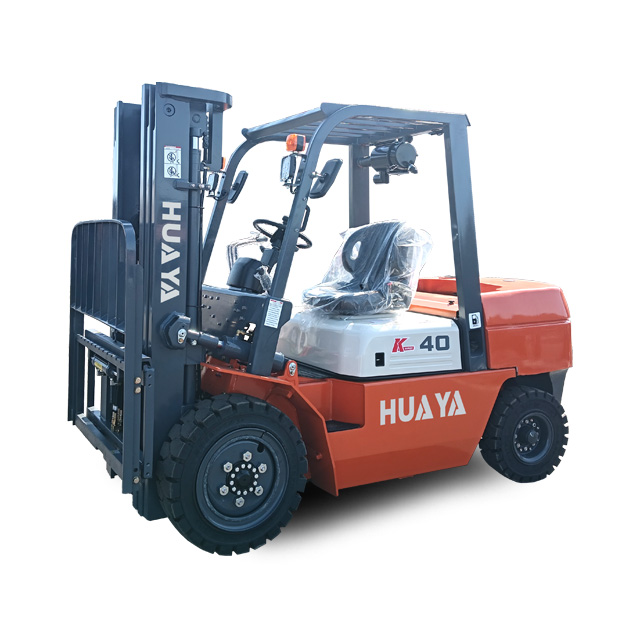
Nachrichten
Die Occupational Safety and Health Administration (OSHA) bietet umfassende Vorschriften und Richtlinien für den sicheren Betrieb von Gabelstaplern, die unter die Kategorie der motorisierten Flurförderzeuge fallen. Hier finden Sie einen Überblick über die wichtigsten Punkte der OSHA in Bezug auf Gabelstapler:

Die OSHA-Vorschriften für Gabelstapler sind im Code of Federal Regulations (CFR) unter 29 CFR 1910.178 zu finden. Diese Normen behandeln verschiedene Aspekte des Gabelstaplerbetriebs, der Wartung und der Schulung.
Die OSHA schreibt vor, dass Arbeitgeber sicherstellen müssen, dass alle Gabelstaplerfahrer ordnungsgemäß geschult und zertifiziert sind. Das Schulungsprogramm muss Folgendes umfassen:
Formale Unterweisung: Dies kann Vorträge, Diskussionen, interaktives Lernen am Computer, Videos und schriftliches Material umfassen.
Praktische Ausbildung: Dazu gehören Demonstrationen durch den Ausbilder und praktische Übungen durch den Auszubildenden.
Bewertung: Die Bediener müssen hinsichtlich ihrer Leistung am Arbeitsplatz bewertet werden, um sicherzustellen, dass sie Gabelstapler sicher bedienen können.
Inspektionen: Gabelstapler müssen vor dem Einsatz überprüft werden, um sicherzustellen, dass sie in einem guten Betriebszustand sind. Jegliche Probleme müssen behoben werden, bevor der Gabelstapler in Betrieb genommen wird.
Handhabung von Lasten: Die Bediener müssen sicherstellen, dass die Lasten stabil und sicher sind, bevor sie sie anheben oder bewegen. Das Überladen des Gabelstaplers ist verboten.
Sicheres Fahren: Gabelstaplerfahrer müssen sich an Geschwindigkeitsbegrenzungen halten, an Kreuzungen hupen und den Weg freihalten. Die Sicherheit von Fußgängern muss immer berücksichtigt werden.
Regelmäßige Wartung und Inspektion sind von entscheidender Bedeutung. OSHA verlangt, dass jeder Gabelstapler, der sich in einem unsicheren Betriebszustand befindet, aus dem Verkehr gezogen wird, bis er repariert ist.
Die Arbeitgeber müssen dafür sorgen, dass die Arbeitsumgebung für den Gabelstaplerbetrieb sicher ist. Dazu gehören klare Wege, eine angemessene Beleuchtung und eine geeignete Beschilderung, die Gabelstaplerfahrer und Fußgänger leitet.
Arbeitgeber müssen Aufzeichnungen über Schulungen, Inspektionen und Wartung führen. Diese Dokumentation trägt dazu bei, die Einhaltung der OSHA-Vorschriften zu gewährleisten, und dient als Nachweis im Falle von Zwischenfällen oder Inspektionen.
Mangelnde Ausbildung: Einer der häufigsten Verstöße ist das Versäumnis, Gabelstaplerfahrer ordnungsgemäß zu schulen und zu zertifizieren.
Unsachgemäße Verwendung: Verwendung von Gabelstaplern für Zwecke, für die sie nicht ausgelegt sind, wie z. B. das Anheben von Arbeitern ohne angemessene Sicherheitsausrüstung.
Versäumnis der Inspektion: Nichtdurchführung der erforderlichen Inspektionen vor der Nutzung oder Ignorieren von Wartungsproblemen.
Die OSHA-Vorschriften und -Richtlinien für Gabelstapler sollen die Sicherheit der Bediener und anderer Mitarbeiter an Arbeitsplätzen, an denen Gabelstapler eingesetzt werden, gewährleisten. Arbeitgeber müssen diese Vorschriften ernst nehmen und umfassende Schulungen, regelmäßige Inspektionen und ordnungsgemäße Wartung durchführen, um die OSHA-Normen einzuhalten und eine sichere Arbeitsumgebung zu fördern.
Vorherige: Was ist die 3-Fuß-Regel für Gabelstapler?



